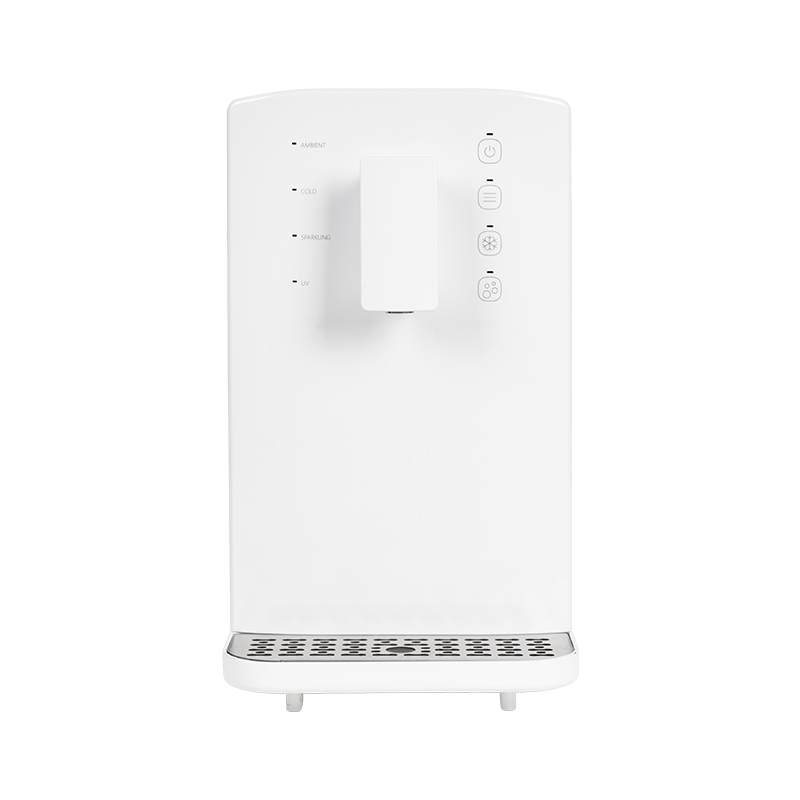HOT PRODUCTS
After long-term use, a layer of white or yellow substance is easily accumulated inside the household water dispenser, which is what we usually call "scale". So, is it really easy for a water dispenser to produce scale during long-term use?
Causes of scale formation
The formation of scale is closely related to water quality. Natural water contains a small amount of calcium ions, magnesium ions and bicarbonate ions. When these waters are heated to boiling, calcium bicarbonate and magnesium bicarbonate will decompose to produce calcium carbonate, magnesium carbonate, carbon dioxide and water respectively. Among them, calcium carbonate, magnesium carbonate and partially converted magnesium hydroxide are substances with very low solubility. They will precipitate from the water to form precipitation. These precipitates are the scale we usually see.
Accumulation of scale in household water dispensers
During the long-term use of water dispensers, due to the need for continuous heating and cooling, minerals and impurities in the water are more likely to precipitate and accumulate inside the household water dispenser. Especially in the heating and cooling tanks, the scale formation rate may be faster due to changes in water temperature. In addition, if the water source used by the water dispenser is hard (i.e. contains more calcium and magnesium ions), the formation of scale will be more significant.
The impact of scale on household water dispensers
The accumulation of scale will not only affect the appearance of the water dispenser, but more importantly, it will have a negative impact on the performance and service life of the water dispenser. Specifically:
Reduced water quality: Scale contains a large amount of minerals such as calcium and magnesium. Excessive accumulation of these minerals in the human body may cause diseases such as stones. At the same time, scale will also absorb harmful substances such as bacteria and viruses in the water, further reducing the water quality.

Affecting the taste: Impurities such as scale and bacteria will deteriorate the water quality and affect the taste of drinking water. Long-term drinking of this kind of water with odor and poor taste may affect our appetite and health.
Reduced efficiency: Scale will block the waterway of the household water dispenser, resulting in reduced working efficiency of the heating element and the cooling element. This will not only increase the energy consumption of the water dispenser, but also shorten the service life of the equipment.
How to prevent and remove scale
In order to prevent and remove scale in household water dispensers, we can take the following measures:
Regular cleaning: It is recommended to clean the water dispenser once every three to six months. If the water dispenser is used frequently, the cleaning cycle should be shortened appropriately. When cleaning, you can use professional detergents or acidic substances such as vinegar and citric acid to remove scale.
Use soft water: If the water quality in your area is hard, you can consider using soft water or installing a water softening system to reduce the calcium and magnesium ion content in the water, thereby reducing the formation rate of scale.
Replace the filter element: For water dispensers equipped with filter elements, the filter element should be replaced regularly according to the manufacturer's recommendations to maintain the filtration effect and reduce the accumulation of scale.
Household water dispensers are indeed prone to scale in long-term use. However, through measures such as regular cleaning, using soft water, and replacing filter elements, we can effectively prevent and remove scale, ensure the performance and service life of the water dispenser, and ensure the safety of our drinking water.





 Language
Language
 English
English Español
Español





-1.png)


 ADDRESS
ADDRESS CONTACT
CONTACT EMAIL
EMAIL